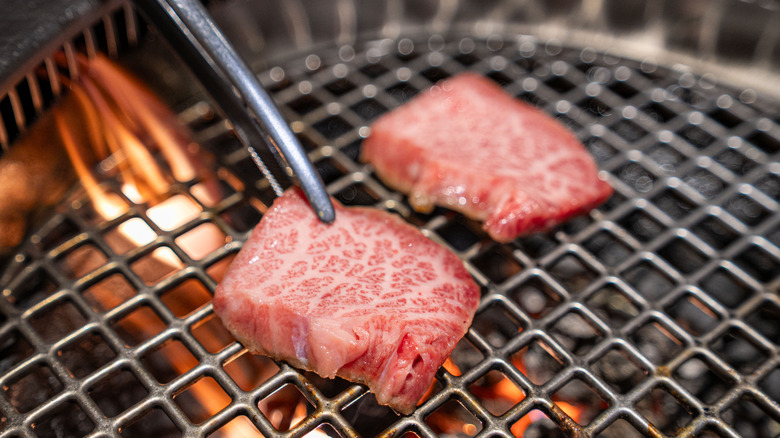Steak Sandwiches Look Way Different In Japan
There are many types of steak sandwiches here in the States, but most varieties, like a Philly cheesesteak, use chopped or sliced varieties of beef. Way over in Japan, however, the go-to steak sandwich looks much different because the meat between the slices of bread is bigger, similar to how it would be served on a plate with potatoes here. Known as a beef katsu sandwich, it's certainly one of the Japanese dishes you need to try at least once, whether that's at an authentic eatery at home or during your travels across Japan.
A beef katsu sandwich, or Wagyu beef katsu sandwich, uses a premium cut for loads of juicy, tender, flavorful bites. Unlike the shredded or chopped beef that we're used to mixing with onions and peppers, this sandwich contains a 12-ounce sirloin cut about an inch-thick. While the steak is certainly the main star of the Japanese dish, the bread is equally as important. It should be Japanese milk bread that's a bit sweet and very soft with a thin crust. The history of Japanese-style milk bread dates back to 1862, more than three decades before this sandwich hit trendy eateries across the country.
More about Japanese Wagyu steak katsu sandwiches — and how to make one at home
The katsu sando originated around 1899, but it was initially made with a pork cutlet, which is still a popular variation today along with the chicken katsu sandwich. The Wagyu steak version, or gyukatsu sando as it's known in Japan, is often credited to chef Kentaro Nakahara's omakase spot Sumibiyakiniku Nakahara in Tokyo. It can be found across the country and the world at various price points, although you can always expect Wagyu to be a bit pricey.
You can make a Wagyu steak katsu sandwich at home by cooking the meat in a cast-iron skillet over medium-high heat similar to other cuts. Secure your milk bread from a local Japanese bakery, and cut the cooked steak to fit the slices of bread. You can get creative and add cabbage slaw or relish, although it's not often present in traditional forms of the sando. Otherwise, the only other necessary ingredient is tonkatsu sauce to add more flavor and a little moisture to the steak sandwich.

